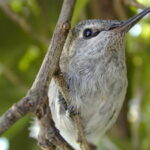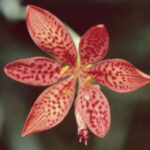Planting a Daphne shrub is a wonderful way to enhance your garden area. This shrub blooms in the late spring to early summer and continues blooming into the fall. The silver/gray foliage is smooth textured, making a lovely contrast with the sweet smelling white flowers draws butterflies and hummingbirds into your garden, and you can plant this shrub by itself in the landscape, or grow them grouped together in foundation plantings or as a hedge. They also look perfect growing in a rock garden. It is hardy in U.S. Department of Agriculture zones 5 through 9 depending on the variety.
All parts of Daphne are poisonous. When planting or working with this shrub pull on a pair of gardening gloves.
Location
In the spring, determine where you want to plant Daphne. This shrub does not like to be transplanted, so make sure you choose a permanent location. Before you choose the spot, read the tag that came with your Daphne shrub. Most varieties prefer to grow in full sun, but some can grow in partial shade, like the D. arbuscula, D. bholua, D. blagayana, D. mezereum, and D. pontica. One Daphne can grow in deep shade.
Prepare the soil by amending it with 2 to 4-inches of organic compost. Dig or til this into the soil thoroughly. Daphne grows best when the soil is well draining and humus rich. If the soil does not drain well, it can lead to fungal diseases like root rot, crown rot, or leaf-spotting. You may want to test the soil to be sure that the pH levels are 5.6 to 7.5.
Dig the Hole
Dig the planting hole so it is three times as wide as the Daphne’s rootball, but keep the planting depth the same. Scuff the sides and bottom of the planting hole with your spade to loosen it so the roots can penetrate past the hole. If you are planting more than one Daphne shrub, space the planting holes 2 to 3-feet apart.
Remove the Container
Remove the Daphne shrub from the container. Grasp the shrub at its base while someone else pulls the pot away. If the pot does not give way, put your hand over the soil and turn the plant upside down. Bang the rim of the pot on the edge of the worktable. Turn the pot a quarter turn as you bang the pot. If the pot still won’t come off, cut it away with a utility knife.
Examine the rootball. If the roots are visible, gently tease them free with your fingers. Trim away any roots that are diseased or broken.
Planting
Place the rootball in the center of the planting hole. Check to make sure that the shrub is standing plumb and then start filling the hole with soil. Tamp the soil gently with your hands to remove air pockets.
Watering
Water the shrub thoroughly. Hook up the water hose, turning the water flow to low flow. Allow the water to run for several hours so it soaks deep into the soil. Throughout the growing season, continue to keep the soil moist.
Mulching
Place a 2 to 4-inch layer of organic mulch over the soil. Mulch keeps the soil moist and it prevents weeds from growing. Keep the mulch 1.5 to 2-inches away from the bark of the shrub. Mulch that is placed against the bark of a tree or shrub can lead to disease or insect problems.
Pruning
Resist pruning the Daphne, but do remove any diseased or damaged stems early in the spring or after the shrub blooms. This shrub can suffer die-back when pruned.







